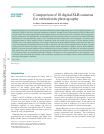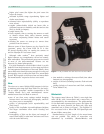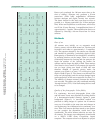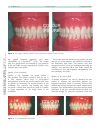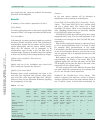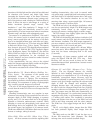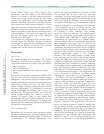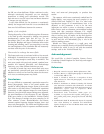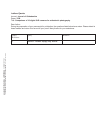
the UK are colour-deficient.
6
Slight variations in color,
although occasionally important, are not absolutely
paramount to taking good orthodontic records. The
main aim was to test for ease of use and hence alteration
of images was not allowed.
It was often difficult for the assessors to consistently
identify the images and from this it was concluded that
there was little difference between the cameras.
Quality of the viewfinder
Testing the quality of the viewfinder requires all cameras
to be lined up and compared by holding two cameras
simultaneously against right and left eye. To our
knowledge, there is no other objective method to test
this feature. Brighter and larger viewfinders allow easier
focusing and handling, and it was surprising to see that
size and brightness of the viewfinder did not necessarily
correlate with the price of the camera.
Time needed to recharge the macro-flash
The fastest units were re-activated within a few seconds.
Although 6–9 seconds does not appear to be a long time,
to us, it is long enough to cause delay in workflow. The
units were tested with previously unused, standard non-
reusable AA batteries (Duracell), and flash-recharge
times may vary when different batteries are used.
It should be noted that most macro-flash units were
not particularly powerful and great care needed to be
taken not to move too far from the patient for the extra-
oral views, as underexposure may result.
Conclusions
It is very difficult to recommend a particular camera for
dental photography. Each of the tested models was
capable of taking adequate images. Some of the models
were easier to use than others. Considerable experience
is necessary to take adequate images for some cameras.
However, once the initial camera-settings were adjusted,
the user-friendliness of the Olympus E1 and Olympus
E300 were similar to the benchmark ‘Yashica Dental
Eye’. The change of settings was more complex for all
other cameras: Canon, Konica-Minolta and Pentax
cameras required aperture changes between intra- and
extra-oral photography. The Nikon and Fujifilm models
had to be manually re-set for aperture and flash between
intra- and extra-oral photography to produce best
results.
The cameras, which were consistently ranked best for
fidelity-fidelity, were among the most complex to use
(Nikon D100 and Fujifilm S 3 Pro). For ideal color
reproduction images of all manufacturers have to be
adjusted, so this parameter is not to be the most
important one when it comes to choosing a camera.
Other factors, such as robustness, environmental sealing
(water and dust protection—Olympus E1), weight,
viewfinder qualities and ability to clean the sensor from
dust at start-up, may all impact on the final decision-
making process. Finally, there is a significant difference
in price and this will undoubtedly play a role in the
decision making process.
Models are being replaced at a rapid pace, and
industry may eventually develop a digital SLR dedicated
for dental use, which is easy to use with the standard
settings, such as the ‘Yashica Dental Eye’.
Acknowledgement
We would like to thank Campkins Camera Centre,
Cambridge United Kingdom for their help and support
for this study.
References
1. Bengel W. Dentale Fotografie. Berlin: Quintessence, 2001.
2. Sandler J, Murray A. Digital photography in orthodontics.
J Orthod 2001; 28: 197–201.
3. Doldo T, Fiorelli G, Patane B. A comparison of three
digital cameras for intra-oral photography. J Clin Orthod
1999; 33: 588–93.
4. Eliades T, Kakaboura A, Eliades G, Bradley TG. Enamel
color alterations associated with orthodontics. In: Graber
TM, Eliades T, Athanasiou AE (Eds) Risk Management in
Orthodontics: experts’ guide t o malpractice.Berlin:
Quintessence Publishing, 2004; 11–18.
5. International Color Consortium. White paper #17.
Available at: http://www.color.org/ICC_white_paper_17_
ICC_profiles_with_camera_images.pdf (accessed 30th May
2006).
6. Cumberland P, Rahi JS, Peckham CS. Impact of congenital
color vision deficiency on education and unintentional
injuries: findings from the 1958 British birth cohort. BMJ
2004; 329: 1074–5.
Journal of Orthodontics JOR3338.3d 11/7/06 19:17:41
The Charlesworth Group , Wakefield +44(0)1924 369598 - Rev7.51n/W (Jan202003)
8 D. Bister et al. Features Section JO September 2006



